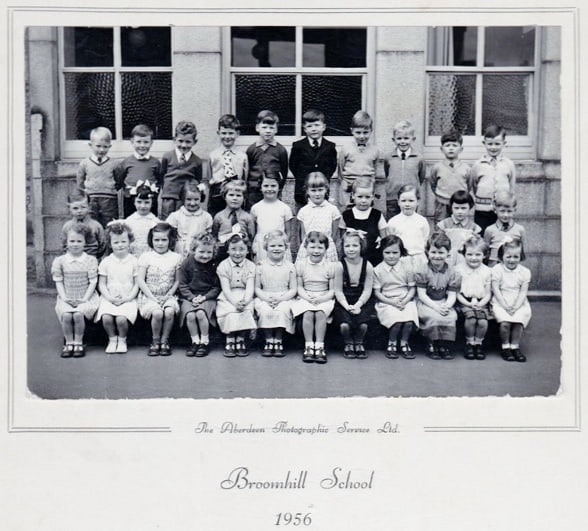The University has followed all of the children born in Aberdeen in 1921, 1936, and 1950-1956 as they grow and age.
Collectively these groups are known as the ABERDEEN BIRTH COHORTS, and are a jewel in the crown of Scottish health research and have helped to advance our understanding of aging well.
In primary school these children sat tests of reading and mental ability. Over the years, researchers have linked the results from these tests to health and social information.
The linked data has been used to answer questions like:
- Does being born very small affect mental health later in life?
- Is the risk of dementia related to childhood intelligence?
- What influences quality of life in old-age?
Participants born in 1921 and 1936 have been invited back for a wide variety of studies at the University. Similar research is being started for the Children of the 1950's group.
We are particularly interested in gathering details about what it was like growing up in Aberdeen through these fascinating and turbulent times.
Reunion for Children of the 1950s
On 20th February 2016, the Aberdeen Children of the 1950s came together with researchers for a big reunion.
350 members attended from across Scotland, and several from England. On the day, we talked about the study's history and results, gathered views on data management, and explored the important influences on wellbeing.
- Watch short talks form the reunion
-
- Welcome address by Sir Ian Diamond, former University Principal
- History of the Aberdeen Children of the 1950s by Dr Jessica Butler, study research fellow
- Generation Scotland by Prof David Porteous, study member and professor of medical genetics
- Aging and The Brain by Prof Alison Murray, professor of radiology

47 researchers also joined us from the University of Aberdeen, the University of Edinburgh, Generation Scotland, the Administrative Data Research Centre, and NHS Grampian.
The researchers had a chance to sit down with participants. One large group talked about how the data in the study is used.
There were also small groups who talked about a wide range of questions. They explored key events from childhood, what has helped during tough times, how their diets have changed, and what makes their community special.

- Some results from the interviews and questionnaires
-
The reunion hit the news, too! There were stories in the Daily Mail, The Herald, The Scotsman, BBC Radio, Press and Journal, Evening Express, and on STV.

There are lots of lovely school photos that members have put on the study Facebook page, and more photos from the reunion day.
Results from Surveys and Interviews
Volunteering
Members were very keen to volunteer for more studies. More than 90% were happy to complete a survey, talk to a researcher about growing up, or give a blood sample. Right now, we are organizing another postal survey, and we hope to have more studies for participants to volunteer for soon.
“Give more questionnaires because things change so quickly.”
Study management
Participants were satisfied with how the study and research projects are being run by the steering committee and Grampian Data Safe Haven.
Many people asked for clear descriptions of the research results, and this is now a top priority for us! In the coming months, we will post summaries of the scientific discoveries made using the Aberdeen Children of the 1950s data.
“Share the general findings of the research, and making us feel that it is of benefit by giving examples of how research findings have helped make things better.”
Important childhood events
Participants were asked the key memorable event in their childhood. There were lots of good memories of outings with families and playing with friends. Many mentioned the 11-Plus exams as a big day. People also said they were affected by the illness or loss of a family member. And many remembered the big impact of the typhoid epidemic in Aberdeen in 1964 - with 6 weeks off school.
"Remember moving house at aged 9, where we had an inside toilet and a bedroom each!"
Neighbourhoods
Study members spoke about big changes in their communities since their childhoods. They said that in the 1950s and 1960s, they and their families had close relationships with those living near them. One participant described her childhood street as having “all open doors”. Some said that these days they rely more on friends from work than on their neighbours.
“Where I grew up there was a strong sense of community, people would always be there to help.”
Childhood play
Many described their childhood as having a great deal of freedom, spent outdoors with friends and siblings. Members spoke about playing football in the street and going for picnics at the beach. Several mentioned that Aberdeen always felt like a very safe city. They noted that technology and safety concerns have moved children and the lives of their families indoors today.
"The beach has changed - it used to have swings and chalets. Families would take picnics and go for the whole day for free."
Aberdeen
Asked about what makes Aberdeen and Aberdonians special, many mentioned that though it is a small city, Aberdeen has the feel of a village. In particular, that its distance from other cities “being up in our own wee corner of Scotland” has given a strong identity, and sense of community.
“For a growing town it still has a village feel with people looking out for each other.”

Add your memories and photos to the Facebook page! And if you have any questions or comments, please contact the study manager by email at children1950s@abdn.ac.uk or by phone at 01224 437288.



